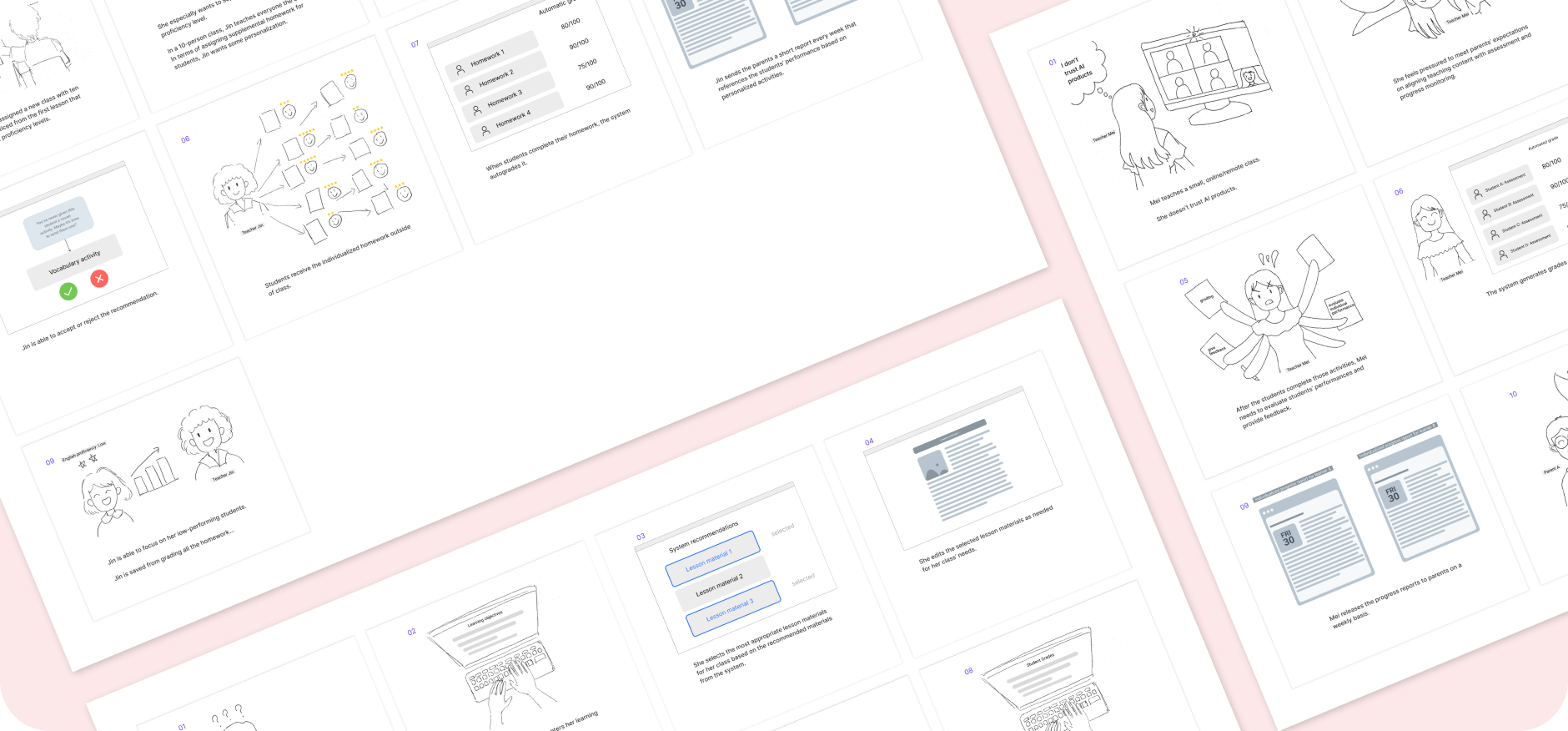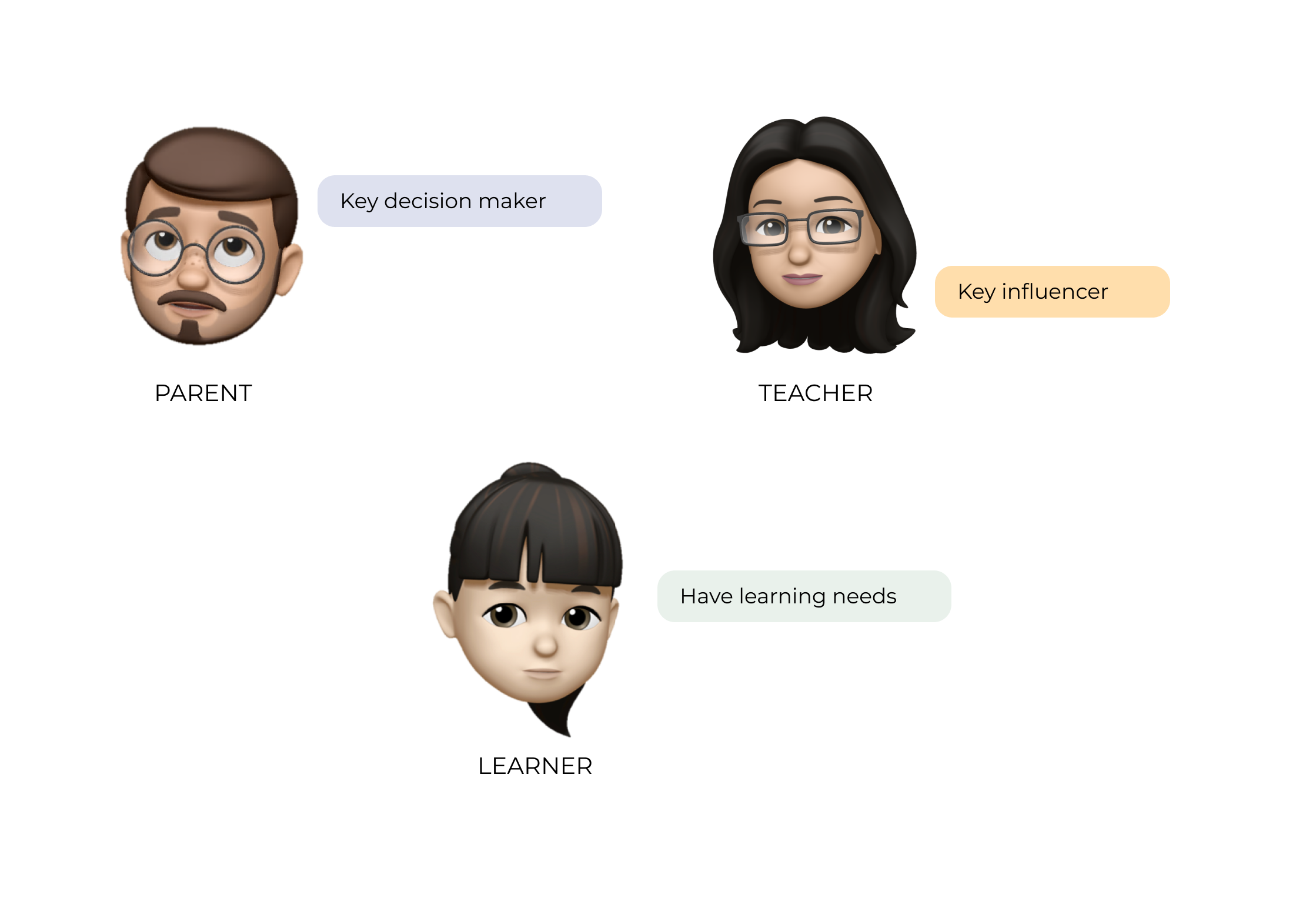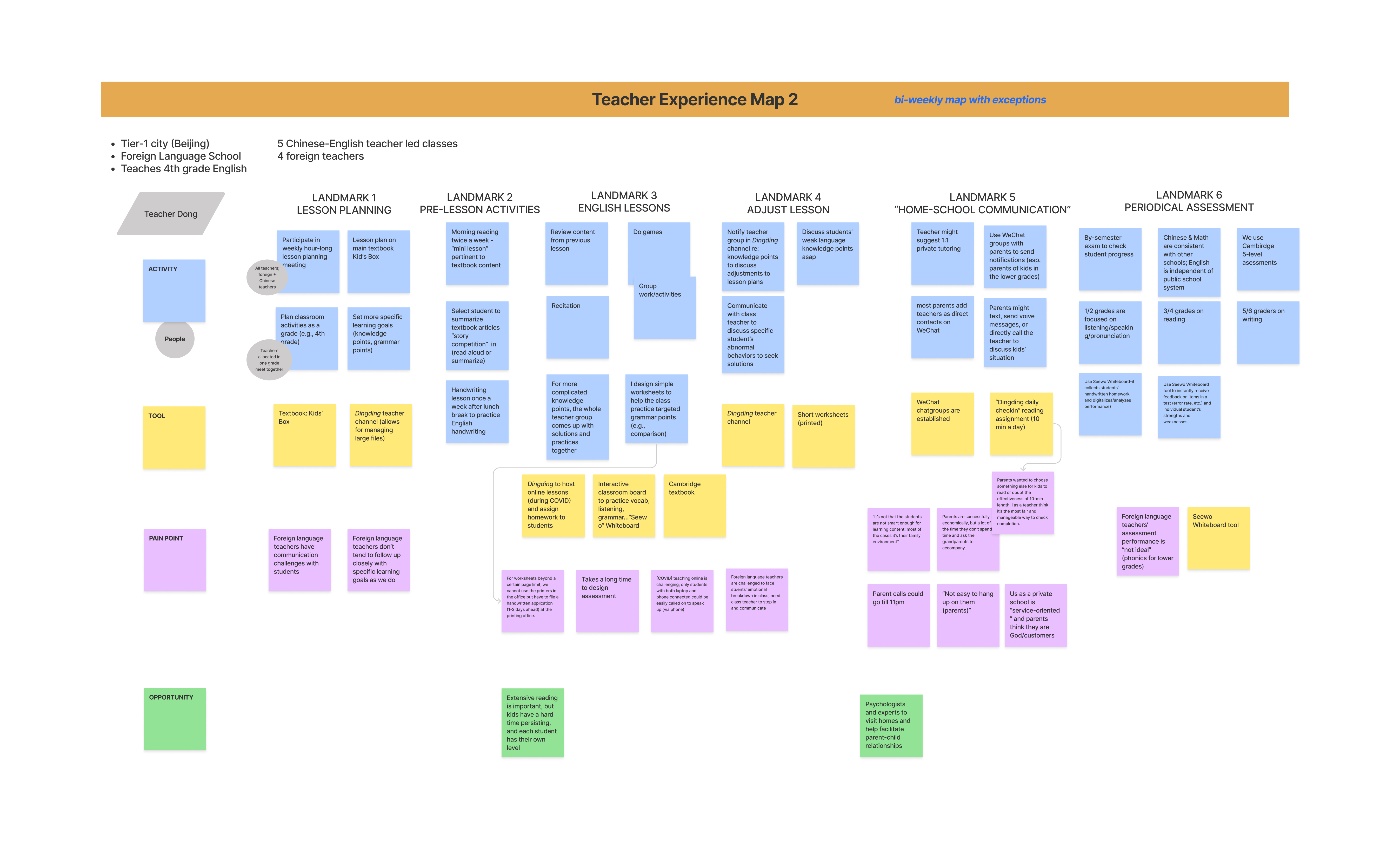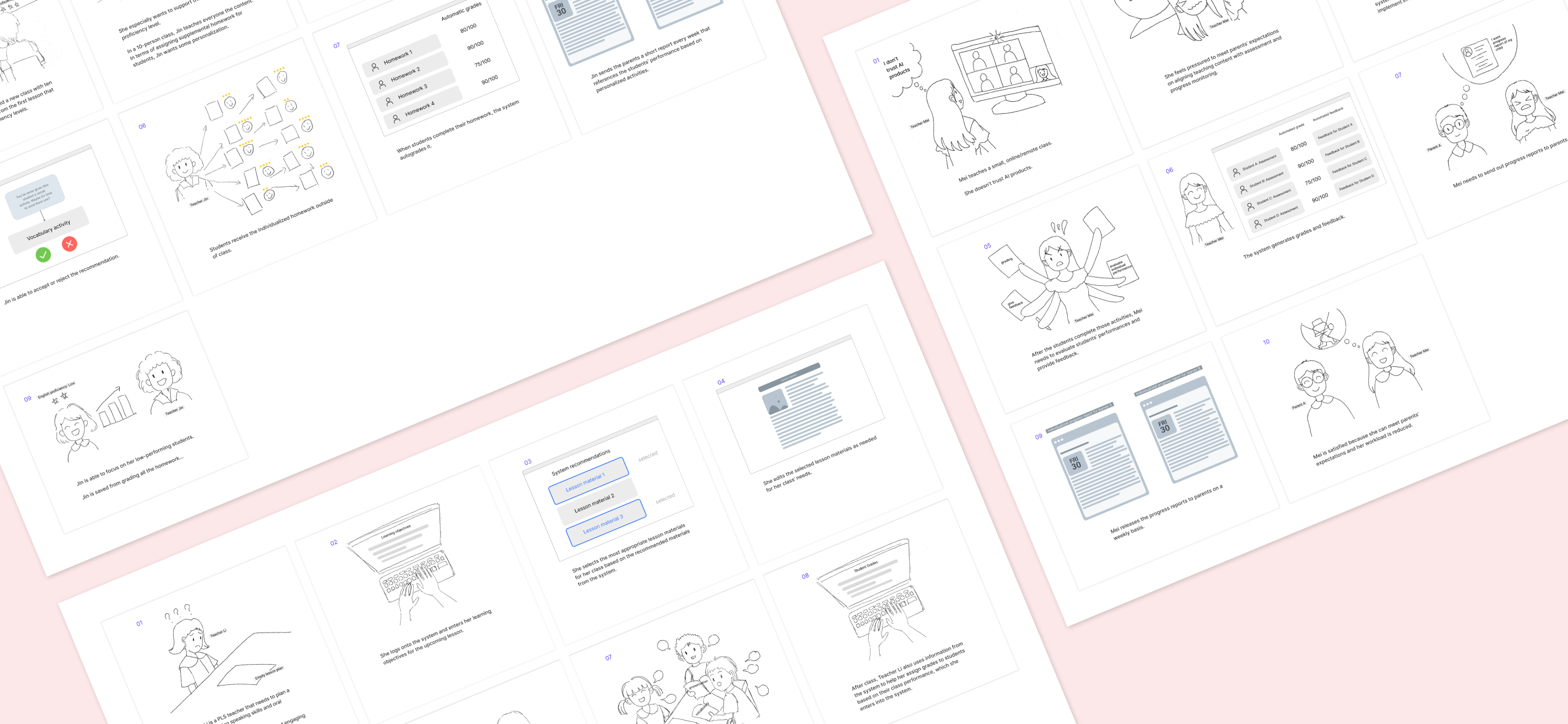Product design | Interaction design | UX Research

Innovative incubator project
Lead UX designer
This is a project I worked on at Educational Testing Service. As our company starts to expand its horizon in language learning territory, 10-12 years-old learners in China were set as the initial target user for my team to explore, as well as to understand their needs and the opportunity for our company.
As the lead UX designer of this project, I worked in a cross-functional agile team. My main contributions include:
Very little is known about this target user group. As no user recruitment channel has been set up yet, my team had a hard time recruiting users to talk to.

Worked closely with the lead UX researcher on the team, we tried to recruit users through our friends and family in China. We also connected with a subsidiary company in China and asked them to post recruitment surveys on their social media account.
However, we still cannot get enough users.
To gather enough data to inform design decisions, I proposed a journey mapping co-design method (i) to understand Chinese English teachers' journey and experience and (ii) to help my team identify a specific opportunity within our problem space to design for.

With more information gathered about the users, it was time for the whole team to sit together and design concepts. For a language learning product to succeed, we need to involve language learning experts, instructional designers, natural language processing experts to make sure the concepts not only meet learners' needs from a user experience perspective but also are effective in helping learners improve English skills.
We decided to hold a 6-day virtual design sprint to make informed design decisions within a short time frame. The design sprint was designed in a way that:

Through multiple workshops, our team generated an experience map for each persona, and write how this persona would interact and benefit from our solution in a storyboard.
The outcome of the design sprint is an end-to-end concept and three storyboards represent the user flows for the three personas. We then tested storyboards with real users.

Because our company later shift priorities, this project was discontinued. The following are some of my impacts:
